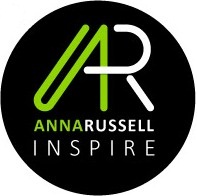The top 3 inches - self talk
 Anna Russell
April 19, 2017
Anna Russell
April 19, 2017
Thoughts -> Feelings -> Behaviour & Actions
This is such a simple process but one that can significantly either positively or negatively impact performance. What we think is converted into how we feel, which subsequently comes through in our behaviour and actions, or in the case of racing, our performance. Two examples are given below:
I think I am going to do well -> I feel ready -> I am confident and positive during the race
I think I am out of my depth -> I feel anxious -> I am nervous and tense during the race
One way that I work with athletes to ensure this process remains positive and therefore enhances performance is to develop the technique of self-talk. Often we don’t pay attention to the internal dialogue that we have. However, if we train the way we talk to ourselves, particularly in the lead-up to, and during races, we will not only have much more control over our own thoughts but be able to use them to increase performance. The first step is to identify what self-talk the athlete already engages in and whether this is positively or negatively impacting on performance. There are three ways to identify your self-talk patterns:
- Retrospection – this is where you reflect on past good and bad performances and recreate your thoughts and feelings before and during these performances. With one of my athletes we found that their bad performances were associated with thinking that they didn’t deserve to be there.
- Imagery – re-live a past performance in great detail and try to pinpoint what you were saying to yourself at times of feeling great and then at times of self-defeat. Write down what this self-talk was.
- Self-talk log – when doing race simulations write down what self-talk was going on as close to the session finishing as possible. Next time you do a simulation try and change the self-talk and see if it has an impact on your performance.
Once self-talk has been identified I then work with the athlete on how to control self-talk during competition. These techniques can also be used in everyday life to counter negative thought processes leading to negative behaviours.
- Thought stoppage – once you are away of an unwanted thought, e.g. ‘I’m useless’, have a trigger to stop the though. I’ve seen people use a trigger of a rubber band on their wrist which they ping as their trigger. I used to tap the end of my aero bars on my bike to stop negative thoughts during races.
- Changing negative thoughts to positive – a successful way that I do this with the athletes I coach is to have a word associated with each leg of the race. For example during the run they may use the word ‘fresh’ and when negative thoughts on fatigue come in they repeat the word ‘fresh’.
- Countering – this is where you use fact and reason to refute any underlying negative beliefs. Often this fact and reason can take the form of time trials or best performances done in training. If the thoughts come in that someone is going to pass you because they are better than you are, you can counter this with the fact that you are well prepared and this is evidenced in your training logs (read these before the race).
- Create affirmation statements – similar to the positive words I have athletes associate with a race I also find affirmation statements have a similar effect. When I was racing I would often encounter negative self-talk during the swim leg of a triathlon. I found the statement ‘Grip and Rip’ really helpful and would use this during the swim as a way to stay positive and confident.
Practice some of these during your training and be aware of what you are saying to yourself leading into, and during races. Thoughts aren’t benign, they have a direct impact on performance.

Photo cred: Scottie T Photography (http://www.scottiet.com/)
Theoretical concepts from Applied Sport Psychology (Williams, J.M. & Krane, V.)
